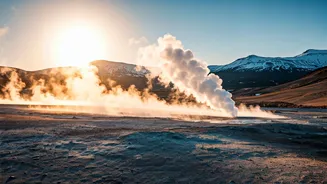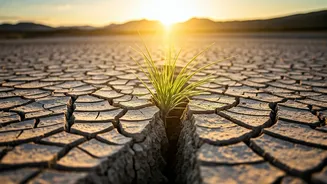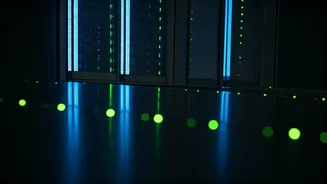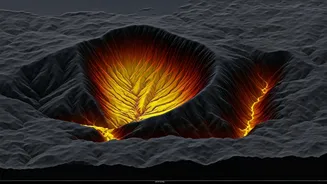Zanskar's Groundbreaking Approach
Zanskar is redefining the approach to geothermal energy extraction. The company, based in Utah, has developed an innovative method using artificial intelligence
(AI) to pinpoint locations ideal for geothermal energy harvesting. The conventional approach to finding geothermal pockets often involves extensive exploration and analysis, which can be time-consuming and costly. However, Zanskar's AI model swiftly assesses overlooked land, identifying promising sites that traditional methods may have missed. This AI-driven strategy is proving to be remarkably successful, allowing the company to find more geothermal pockets in just three years than the industry has found over the past three decades. The company's focus on using what's already available, instead of going to new, untapped sites, also contributes to its efficiency.
The Basics of Geothermal
Geothermal energy relies on the heat emanating from the Earth's core. To harness this energy, Zanskar and other developers drill holes into the ground, creating wells. Water is then pumped into these wells, where it is heated and boiled by the earth's internal heat. This process transforms the water into steam, which rises to the surface. The steam then drives a turbine, which spins a generator. The spinning generator produces electricity, which can be used to power homes, businesses, and other facilities. This method makes geothermal a renewable energy source, utilizing less land per gigawatt-hour compared to coal and even solar and wind. The consistent availability of geothermal energy, unaffected by weather conditions, provides a reliable energy source and promotes domestic energy production.
AI's Remarkable Success
Zanskar's AI model has achieved remarkable success in locating geothermal pockets. The model identifies characteristics indicative of geothermal activity, greatly improving the speed and efficiency of resource discovery. This technological advancement has positioned Zanskar as a leader in the industry. In 2024, the AI model surpassed human capabilities in accurately identifying these pockets, enhancing its ability to identify geothermal characteristics. By focusing on what is available, the company minimizes the exploration's environmental impact. This AI-driven approach not only accelerates the process of identifying viable geothermal sites, but it also improves the overall efficiency and sustainability of energy production. The co-founder and CTO of Zanskar, Joel Edwards, stated that the AI model has been incredibly successful in finding geothermal pockets.
Benefits of Geothermal Energy
Geothermal energy presents several advantages as a clean energy source. Its availability is not dependent on weather conditions, making it a dependable alternative to solar and wind energy. Geothermal energy is renewable and utilizes less land per gigawatt-hour compared to coal and even solar and wind. Additionally, it supports domestic energy production, enhancing a nation's energy independence. Energy can be produced consistently, unlike solar and wind that rely on sunlight and wind speeds. These factors collectively make geothermal energy an attractive option for meeting future energy demands. Furthermore, the use of AI streamlines geothermal energy exploration and extraction processes, making it more efficient and cost-effective. Zanskar is leading the way in making geothermal a viable option.
Future Goals and Potential
The U.S. Department of Energy (DOE) aims to reduce geothermal energy prices by 90%, targeting $45 per megawatt-hour by 2035. While this goal is a decade away, projections suggest that the U.S. is on track to meet this target. The success of Zanskar and similar ventures is crucial in achieving this goal and expanding the utilization of geothermal energy. Zanskar's work shows how companies can use technology to find innovative, cleaner ways to create power. With ongoing advancements in AI and exploration techniques, geothermal energy has the potential to become an even more significant contributor to the global clean energy portfolio. Continued investment and innovation in this area will be crucial for harnessing the full potential of this sustainable resource.













